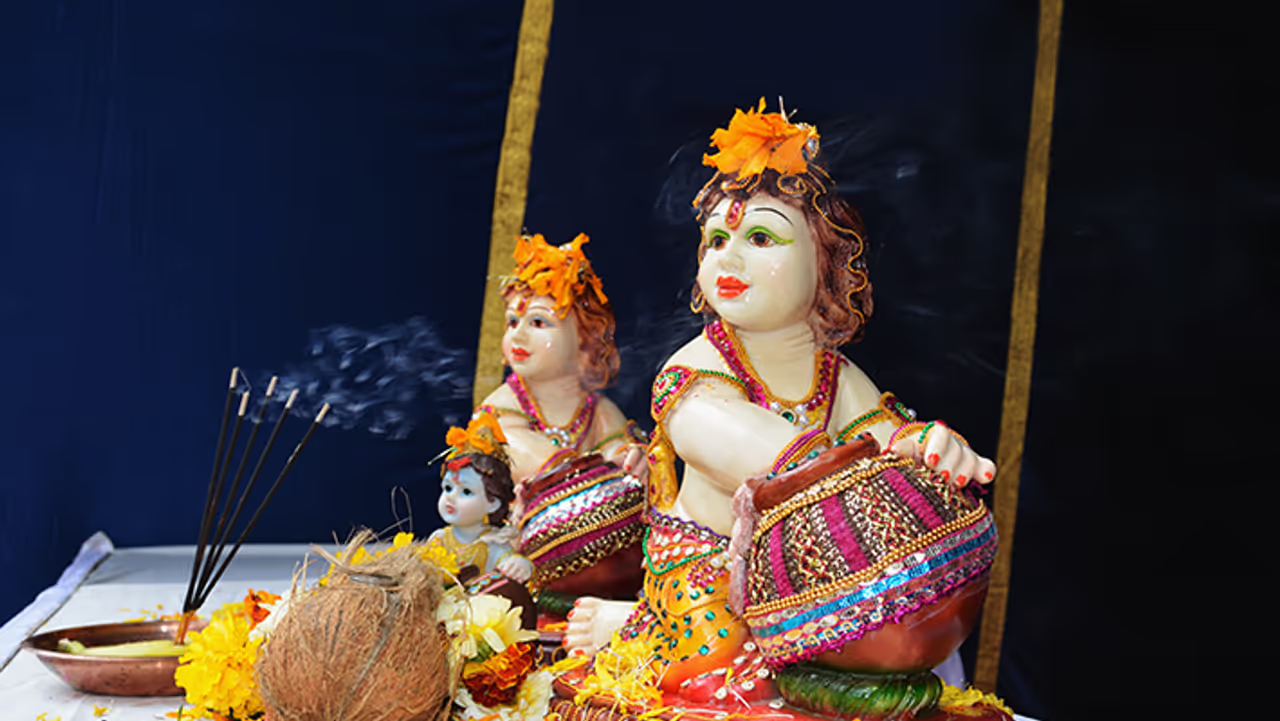Janmashtami Special: 5 myths about Lord Krishna and what really happened
Shri Krishna Janmashtami is a time for celebration and reflection on the life of Lord Krishna. However, many myths surround his story.

Shri Krishna Janmashtami is a significant Hindu festival observed on the Ashtami Tithi of the Krishna Paksha in Bhadrapada month. Religious texts state that on this date during Dvapara Yuga, Lord Vishnu incarnated as Shri Krishna. This year, Janmashtami will be celebrated on Monday, August 26. There are numerous myths about Lord Krishna that continue to be widely believed. Discover five such myths about Shri Krishna and their truths.
Myth: Did Lord Krishna have 16,000 queens?
The truth: According to Shrimad Bhagwat, Lord Krishna had eight principal queens, with Rukmini being the foremost among them. There was a demon named Narakasura who had imprisoned 16,000 women. Shri Krishna defeated Narakasura and rescued these women. To ensure they were honoured and respected in society, Krishna married them, giving them the status of his wives.
Myth: Did Shri Krishna flee in fear during battle?
The truth: Shri Krishna once fought against a demon named Kalayavan, who had received numerous boons making him invulnerable to death. To outsmart Kalayavan, Krishna pretended to flee from the battlefield. Kalayavan pursued him and Krishna hid in a cave where King Muchukunda of the Ikshvaku dynasty was asleep after a long period of meditation. Mistaking Muchukanda for Krishna, Kalayavan woke the king, who then incinerated him. This was part of Krishna's strategy, and due to this retreat, Krishna earned the nickname "Ranchod," meaning "one who runs away from battle."
Myth: Was Shri Krishna responsible for the Mahabharata war?
The truth: Some believe that Shri Krishna was responsible for the Mahabharata war, but this is not the case. Krishna made every effort to prevent the conflict. He proposed a settlement to the Pandavas, suggesting they accept just five villages to avoid the war. However, Duryodhana refused to grant this request. Consequently, Krishna advised the Pandavas to proceed with the battle.
Myth: Was Shri Krishna's body blue?
The truth: Many texts describe Lord Krishna as having a blue body, but this is not entirely accurate. It is said that Krishna's skin appeared light blue after being poisoned by Putana. Another reason for the blue appearance is attributed to the poison of Kaliya Naga. Lord Vishnu is called Neelvarna, meaning "blue-coloured," which reflects his divine nature and not necessarily Krishna's actual skin colour.
Myth: Did Shri Krishna steal makkhan and eat it?
The truth: Lord Krishna is often referred to as the "butter thief," but this was part of his divine leela, or playful pastimes. His actions were symbolic, reflecting the importance of consuming nutritious foods like milk, curd, ghee, and butter during childhood to build strength.